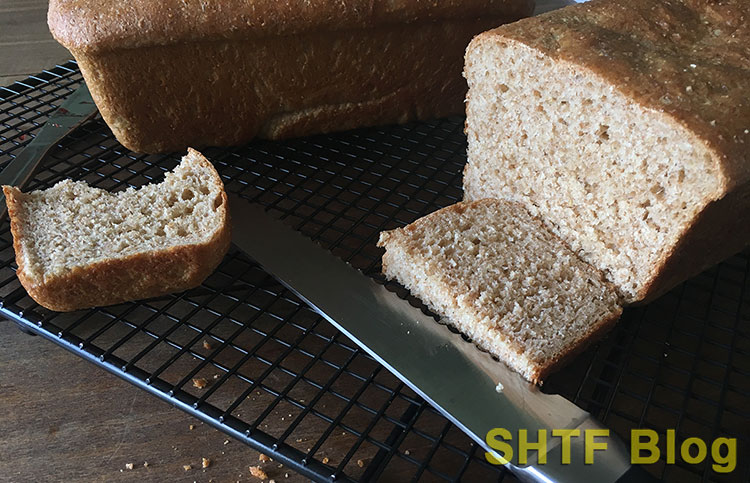
There are many different types of bulk survival foods, and Chef’s Banquet from Ready Project is one of them. Available online, at Costco, and other stores/sites, they’re becoming a bigger player in a rapidly expanding freeze-dried food market.
We’ve written about freeze-dried foods before, even a comprehensive prepper guide. The value of these products cannot be overstated. Yes, they are more expensive than simply stocking beans and rice, but with food storage, you have to diversify. You need a well-stocked pantry, beans, rice, and even freeze-dried foods.
Their shelf-life of 25+ years is their claim to fame. They are the ultimate “set it and forget it” survival food. When you buy a can, you can pretty much expect it to last much of your life. There is no need to rotate stock, no spoilage, etc.
But how do long-term foods of this type taste? How well do raw ingredients cook up? That’s the subject of this article, as we take a closer look at one Chef’s Banquet product.
Health in the Pantry
I’ve taught nutrition classes across much of my state for years, and I can tell you that the notion that eating healthy food is expensive is a false narrative. Yes, it’s true that, based on research from Harvard School of Public Health, eating healthy costs about $1.50 more per day. But they used diets rich in fruits, vegetables, fish, and nuts in their comparison.
Another way to look at a comparison is to see how many pounds of flour, rice, beans, pasta, potatoes, dehydrated milk, and other pantry staples you can get to cook great, low-cost, healthy meals. Then compare that to how many grams of food you would get from buying frozen dinners. Those who argue that healthy food is too expensive should check look at low-cost healthy ingredients used to make healthy foods.
Yes, there is a hidden “cost” factor here, and that is your time. If you want to eat healthy for less money, you have to be prepared to actually cook your food. This is where savings are had. Raw ingredients are not expensive. You pay more for convenience, whether healthy or unhealthy food.
As such, I’m a huge proponent of buying “pantry staples” not only for their great health value, but because they make great disaster food as well! Pantry staples such as oats, dehydrated potatoes, beans, rice, etc. can often last for years in storage before being consumed, meaning that not only are these foods good for you, but they’ll be ready after disaster strikes as well!
Bread as a Post-Disaster Staple
One of the pantry staples that I always encourage that people have on hand is bread. However, bread is not on the list of best foods for long-term storage. Bread has a short shelf-life. It only lasts for about a week or so on the shelf until it starts to mold. You can store it in the freezer, but as preppers, relying on a freezer is not something we plan on when stocking food supplies. It’s likely that a disaster situation will mean you no longer have access to electricity, meaning that this isn’t a viable alternative for long-term post-disaster bread.
I’m not saying that bread will save the day – that bread is all that stands between your family and a psychological tailspin – but I am saying that the more you can do to keep normalcy within your house post-disaster, the smoother things will run for you. Having bread is just a little thing that you can do to help with that. What’s better than a warm loaf of homemade bread fresh out of the oven?
The best way that you can ensure that you have ready access to such when disaster strikes is to store whole grain wheat berries. These store much longer than flour itself, can be planted to grow more wheat, can be heated up with water much akin to oatmeal, and can be ground into flour to make – you guessed it – bread. Baking bread with hard red wheat is what serious preppers plan for.
Chef’s Banquet Food Storage Basics
It is because of my advocacy for healthy pantry staples that I’m a huge fan of food buckets that contain these ingredients. If you’re looking for an easy solution for keeping your family in stock of the basics for literally thousands of recipes, you’re going to want to check out the Chef’s Banquet Food Storage Basics Bucket.
The hard red wheat I used in this article came from that very bucket. In fact, everything that I’ve been talking about food-wise is already stored in this bucket, vacuum-sealed in Mylar bags to ensure that you have little risk whatsoever of this food being rotten when you need it the most.
Contents
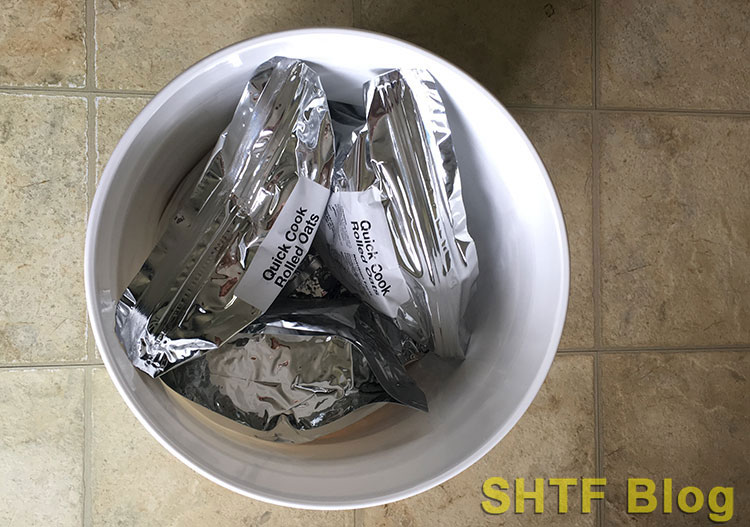
Within the Food Storage Basics Bucket you will find:
Quick Cook Rolled Oats
Oatmeal not only makes a great, body-warming breakfast, but it’s full of fiber too! If you take a look at the great majority of “survival food” out there, you’ll quickly grow to understand the importance of having access to plenty of this post-disaster. Just talk to anybody who’s spent a significant amount of time in Afghanistan and they’ll attest to the fact that a diet of solely MREs quickly leads to constipation.
You need fiber, and quick cook rolled oats will help to provide that for your family. You also gain the ability to bake some excellent cookies! This bucket will give you two packages of oats, with a total of 9200 calories being present here. That’s 92 servings of oatmeal here!
Potato Flakes
I’m of the mind that potatoes are quite possibly one of the most versatile foods on the planet. You can do just about anything with them, and they help to add heart to most any dish that you make. If you’re looking for a surefire way to fill empty bellies after long days of manual labor, potatoes are an excellent way to do so. They have such a history as a survival food that the lack of potatoes led to the Great Famine in Ireland.
The reason I liked dehydrated flakes is because they make an ideal prepper food. Aside from the aforementioned virtue of heartiness, potato flakes are lightweight, are calorie dense, cook quickly, and last a long time in storage as well! Within this bucket you’ll get two packages of potato flakes worth a total of 6480 calories.
Parboiled Long Grain Rice
Rice long has a reputation as a survival food simply because it stores so well. Another benefit of rice is that when combined with beans, you end up with all the essential proteins that your body needs to survive! That’s a pretty cool benefit, is it not?
In this bucket you’ll find one package of parboiled long-grain rice worth 3680 calories. This will give you the ability to cook a wide range of Mexican dishes, stir fry, hearty stews, and other nutritious meals for your family in a time of need.
Precooked Pinto Beans
Beans, bullets, and band-aids. Such is the prepper mantra, and beans have earned their space within the trifecta for a wide number of reasons. Aside from being a good source of protein, beans are also high in fiber, filling, easy to carry long distances, and help give variety to meals.
The only negative with beans you’ll find people saying is that they take too long to cook. Not if they’re pre-cooked they don’t. That’s what you’ll find in this bucket, a form of bean that has already had the hard part done for you, so that you can get these ready to eat in as short of a time as possible. You get one package of beans in this bucket worth a total of 4400 calories.
Hard Red Wheat
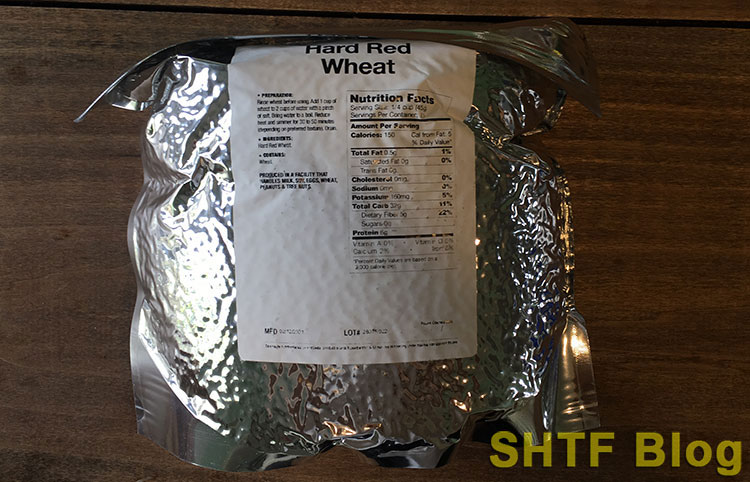
You guessed it! The bucket contains plenty of wheat as well! Two packages of it as a matter of fact! These wheat berries are worth a total of 4500 calories and will give you the ability to bake lots of post-disaster bread!
So let’s jump right in already and see just what backing bread with hard red wheat from Chef’s Pantry looks like.
Baking Bread with Hard Red Wheat in 4 Steps
I don’t have a grain mill. And that’s okay. You don’t necessarily need one to mill your own flour. It would most certainly make the whole process easier – and there are some great manual options out there on the market you may want to consider for true self-reliance – but don’t feel as if you can never mill your own flour without one. More on that in a moment.
Step 1: Wash and Dry the Wheat
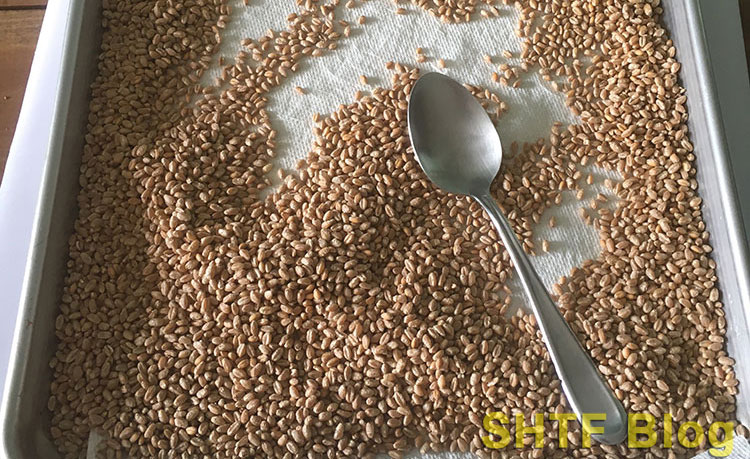
The instructions on the Mylar bag told me that I needed to first wash the wheat before using it. I figured this wasn’t a bad idea. I rinsed the wheat out in a fine steel mesh colander before spreading it all out on a baking tray to dry.
Step 2: Grind the Wheat into Flour
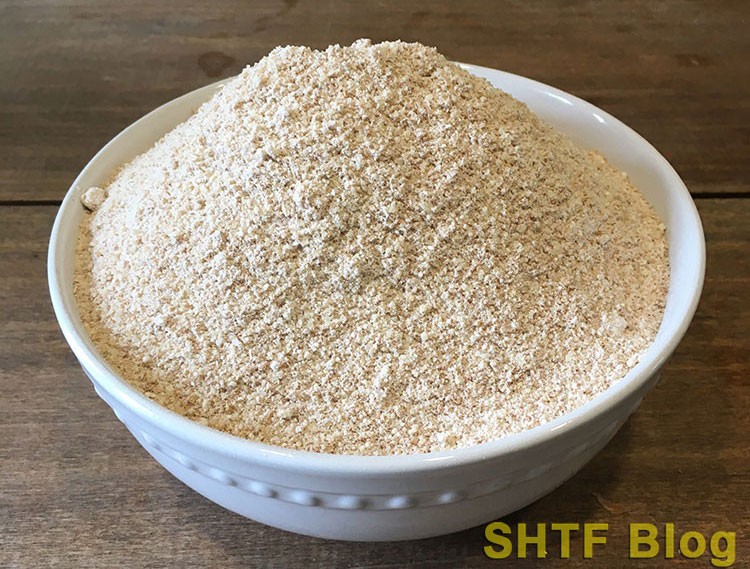
Provided you have a blender or a food processor, you can still do what it takes to turn wheat into bread. I’m assuming that you have some small means of power storage available that can still power small appliances (easily accomplished with a Jackery solar generator). For this process, I used a blender, giving it quite a break in its normal routine of smoothie creation.
Once the wheat was dry enough that I knew it wouldn’t jack up my flour, I tossed it all in the blender. This is a simple enough process. Just grind it all up until it looks like a powder. Easy enough, right?
Step 3: Add Your Ingredients
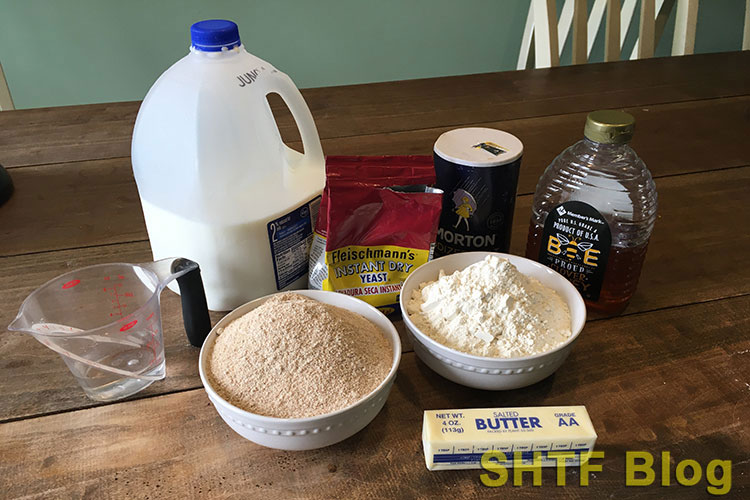
I’d like to say I used an old family recipe. Really, I just used one from Tastes of Lizzy. I made her honey wheat bread.
Step 4: Bake Your Bread
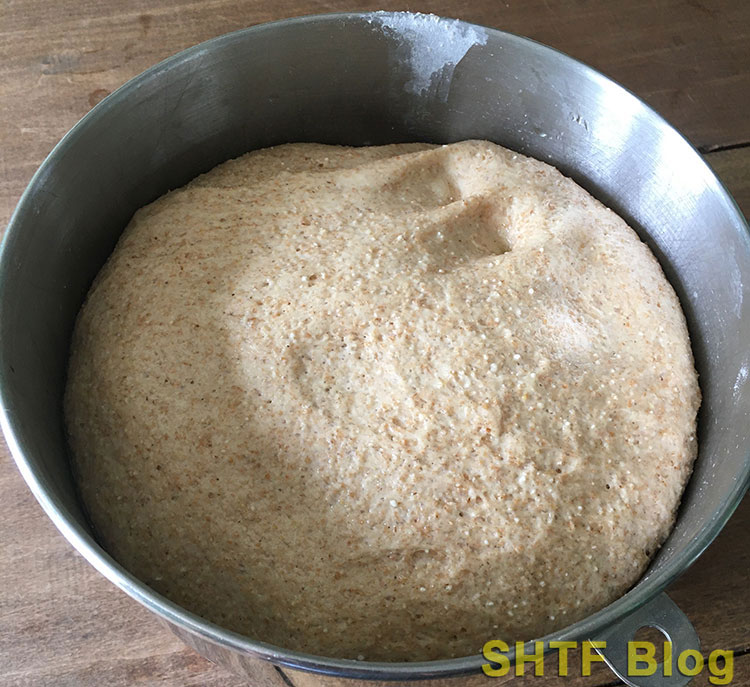
This is going to look a bit different for you likely, depending on your situation. Are you using a campfire, a rocket stove, a wood stove? I don’t know. What I do know is that you want to bake your bread long enough for the bread to rise and look like a loaf of bread.

Final Thoughts
I say all this to say, if you’re looking for a great one-and-done approach to getting your family prepared for a disaster, I highly recommend the Chef’s Banquet Food Storage Basics Bucket. This will really help you to square away your family’s need for pantry staples once the doo doo starts to fly, better ensuring that you have what you need to keep everybody well-fed and happy.
You’re looking at an opportunity to lay aside 28,260 healthy calories that will last for a very long time. If we assume that you’ll be needing 2500 calories/day (operating off of 2000 a day will leave you grumpy and hungry), for two people that means this bucket could potentially last you for 11 days, if this was all the food that you had. That’s quite an amount of food to cram into one five-gallon bucket.
So if you’re looking for the means to not only store an ample amount of food for your family in a convenient to access format, but you’re also looking for a way to bake your own post-disaster bread, I liked the Chef’s Banquet Food Storage Basics Bucket and I think you will too.
Do you have any thoughts on milling your own flour? Have you had the opportunity to try this bucket? Let us know your thoughts in the comments below!
